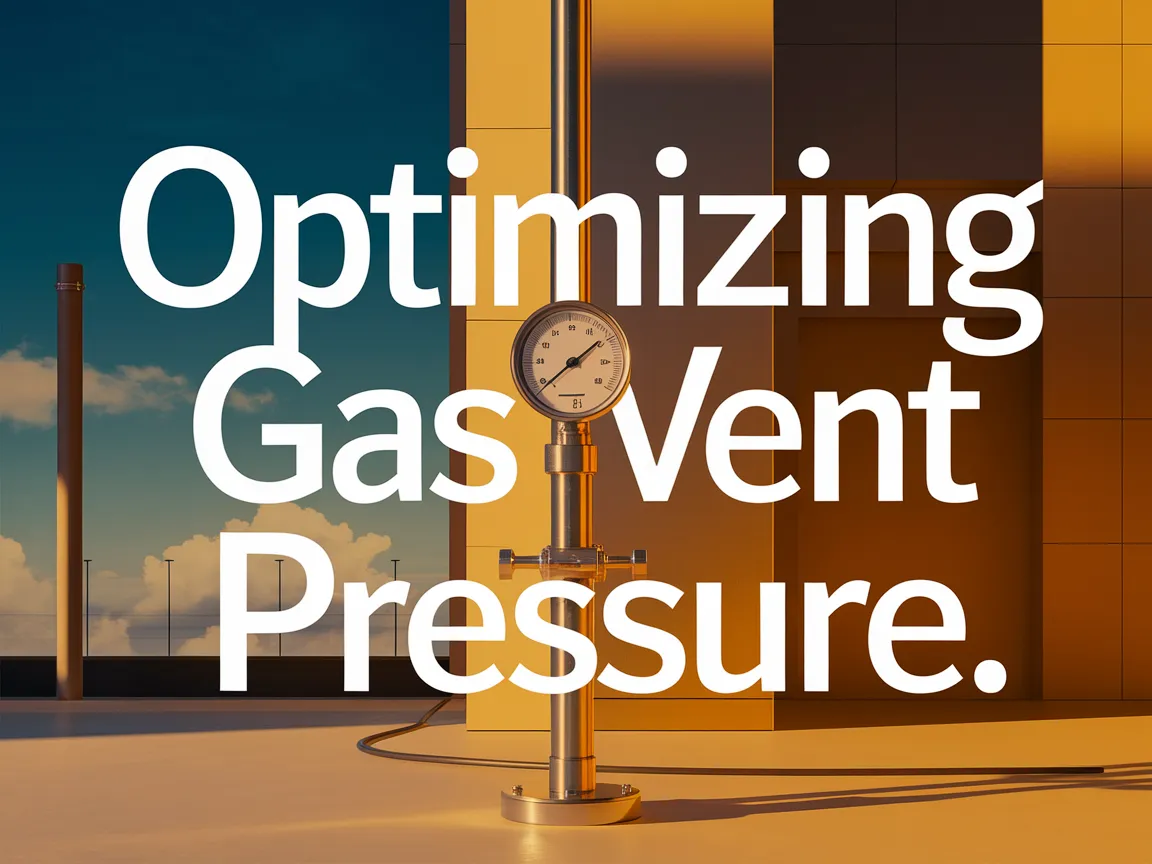Deciding Venting Pressure for Gas Vent Selection
Deciding venting pressure means setting the exact pressure threshold where a battery pack’s safety vent activates during thermal runaway. This pressure value determines when explosive gases escape to prevent catastrophic enclosure rupture.
Set the pressure too low and vents open prematurely during normal operation, allowing moisture ingress. Too high, and cells may violently rupture before gas release occurs.
We’ll explore how chemistry, temperature, and enclosure limits impact this critical safety parameter. You’ll learn practical methods to validate and implement optimal pressures.
Fundamentals Of Battery Pack Gas Venting
Contents:
Gas venting protects lithium-ion battery packs by releasing hazardous gases generated during thermal events. Proper gas vent pressure selection balances containment integrity with controlled pressure release. This prevents enclosure rupture while maintaining operational safety.
Purpose Of Gas Venting in Battery Safety
Gas vents act as pressure-sensitive safety valves triggered during abnormal conditions. Their primary function is rapid gas expulsion when internal pressure exceeds predetermined thresholds. This protects against catastrophic cell rupture and fire propagation.
Thermal Runaway Prevention Mechanisms
During thermal runaway, lithium-ion cells generate up to 2L of gas per Ah capacity within seconds. Vents interrupt the chain reaction by:
- Releasing combustible gases like CO, H2, and hydrocarbons
- Reducing internal temperatures by 100-200°C through gas expulsion
- Preventing adjacent cell ignition by eliminating oxygen-starved environments
Proper venting pressure ensures this sequence activates before structural failure occurs.
Consequences Of Improper Venting Pressure Selection
Incorrect gas venting pressure compromises the entire safety strategy. A 10% deviation from optimal pressure can reduce venting effectiveness by 30-50%. Enclosures may experience plastic deformation at just 1.5x operating pressure limits. This highlights the critical nature of proper enclosure design in safeguarding battery packs.
Risks from Over-Pressurization or Premature Activation
Premature vent opening below 0.5-1.0 bar allows:
- Environmental contamination (moisture/particle ingress)
- Electrolyte vapor leakage causing capacity fade
Delayed activation above 3.0-4.0 bar risks:
- Cell rupture forces exceeding 10 kN
- Projectile hazards from enclosure fragmentation
- Cascading thermal runaway in multi-cell assemblies
Both scenarios accelerate failure propagation and increase toxicity risks.
Critical Factors in Gas Venting Pressure Determination
Selecting gas venting pressure requires balancing gas generation patterns against physical constraints. Battery chemistry dictates gas volume and composition, while enclosure materials define pressure containment limits. Temperature shifts further complicate pressure dynamics during thermal events.
Battery Chemistry and Gas Generation Profiles
Lithium-ion chemistries produce distinct gas volumes during thermal runaway. NMC811 cells generate 1.8-2.2L/Ah at 180-250°C, while LFP emits 0.9-1.3L/Ah. Gas composition varies too – electrolytes with LiPF6 salt yield more POF3 than LiFSI-based formulations.
Electrolyte Composition and Gas Production Rates
EC/DMC solvents decompose at 150°C, releasing CO₂ and ethylene at 12-15mL/Wh/min. Additives like VC increase CO output by 40% but delay gas onset. These rates directly impact venting pressure selection for timely intervention before structural failure.
Operating Temperature Ranges and Pressure Dynamics
Gas volume expands 15-20% per 50°C rise via ideal gas law (PV=nRT). Subzero environments delay vent activation, while 60°C+ operation accelerates pressure buildup. Pressure sensors show nonlinear spikes beyond 2.5 bar during runaway propagation.
Enclosure Structural Limits and Material Constraints
Aluminum housings deform at 3-5 bar, while steel withstands 8-12 bar. Polymer seals fail at 1.2-2.0 bar. Always set venting pressure 30% below yield strength to accommodate weld inconsistencies and material fatigue from thermal cycling. The choice between sheet metal and castings can significantly affect these performance metrics, especially in high-pressure applications. Understanding how their properties influence manufacturing can lead to more effective enclosure designs.
Methods for Establishing Optimal Venting Pressure
Validating gas vent pressure requires empirical testing and simulation. Controlled runaway tests provide real-world data, while modeling predicts complex flow behavior. Timing analysis ensures vents activate before peak pressure occurs.
Testing Protocols for Pressure Threshold Validation
UL 1642 and IEC 62619 specify nail penetration tests with 500-1000Hz pressure sensors. Multiple trials determine statistical activation windows. Burst discs require 10-15 test repetitions to establish reliable opening pressures within ±0.2 bar tolerance.
Controlled Thermal Runaway Simulation Procedures
Heater pads trigger single-cell runaway while monitoring adjacent cell pressures. Standard protocols include: Furthermore, the risks associated with thermal runaway mechanisms in lithium batteries are critical to understand in order to prevent hazardous situations. These mechanisms can lead to rapid temperature increases and potential fire risks if not properly managed.
- 5°C/min ramp rates to simulate gradual failure
- Instantaneous 300°C spikes for worst-case scenarios
- Pressure mapping at 20+ enclosure locations
Data logs reveal whether venting pressure selection prevents cascade ignition.
Modeling Gas Flow and Pressure Buildup
Finite element analysis predicts gas propagation paths and dead zones. Darcy-Forchheimer equations calculate flow resistance through cell interstices. These models optimize vent placement by identifying high-pressure zones needing direct ventilation paths. Effective coolant flow distribution strategies can further enhance system performance by ensuring that coolant reaches all critical areas efficiently.
Computational Fluid Dynamics (CFD) Applications
ANSYS Fluent simulations model multiphase flows with chemical reactions. Key parameters include:
| Parameter | Impact on Venting |
|---|---|
| Turbulence intensity | Affects gas mixing rates |
| Species transport | Predicts flammable gas pockets |
| Porous media settings | Simulates cell stack resistance |
CFD reduces physical testing by 60% while validating gas vent pressure selection.
Peak Pressure Analysis and Activation Timing
High-speed data acquisition reveals pressure rise rates of 50-200 bar/sec during runaway. Vents must activate within 15-30ms of trigger pressure to prevent exceeding enclosure limits. Response time testing uses piezoelectric sensors sampling at 10kHz to measure disk rupture sequences.
Also See: Mica Wrap Application Techniques for Busbars
Vent Design Considerations for Target Pressures
Selecting gas venting pressure requires translating theoretical thresholds into physical safety components. Design choices directly impact vent reliability during thermal runaway events. Material properties and geometric configurations must align with predetermined pressure triggers. To ensure safety in potential fire situations, it’s vital to incorporate effective thermal runaway gas venting pathways. These pathways help direct gases away from hazardous areas, reducing the risk of explosions or further complications during an incident.
Vent Type Selection Based on Pressure Response
Different vents activate at distinct pressure profiles. Burst discs respond instantly at fixed thresholds, while pressure relief valves modulate flow after initial opening. Match the device’s crack pressure to your gas vent pressure selection criteria.
Burst Discs vs. Pressure Relief Valves Characteristics
| Parameter | Burst Disc | Pressure Relief Valve |
|---|---|---|
| Activation Speed | <5ms | 15-50ms |
| Resealing Capability | None | Possible |
| Operating Range | ±3% tolerance | ±10% tolerance |
| Gas Flow Capacity | 100% instantaneous | Gradual modulation |
Burst discs suit explosive gas venting pressures exceeding 2 bar. Valves work better for gradual pressure rises below 1.5 bar.
Sizing Calculations for Gas Flow Requirements
Vent area directly impacts pressure decay rates. Use the ideal gas law (Q=CA√(2ρΔP)) where C=0.62 discharge coefficient. Ensure flow capacity exceeds peak gas generation by 25% minimum. Account for gas viscosity changes at high temperatures. Effective thermal management necessitates thorough attention to these factors, as they play a critical role in maintaining system stability and performance during operation.
Vent Area Optimization for Pressure-Driven Flow Rates
Optimization balances three constraints:
- Minimum area: 40-60mm² per Ah cell capacity
- Pressure drop: Maintain <0.2 bar during full flow
- Structural integrity: Avoid weakening enclosure walls
CFD simulations show rectangular vents reduce dead zones by 18% versus circular ports at equal areas.
Safety Margins and Tolerance Stacking Analysis
Apply 1.5x safety margin between vent activation and enclosure yield point. Analyze worst-case tolerance stacking. It’s essential to consider the design considerations for a BDU enclosure to ensure safety and efficiency. Key design considerations for a BDU enclosure include material durability, ventilation, and thermal management.
- Material thickness variations: ±7%
- Weld strength deviations: ±15%
- Temperature coefficient effects: ±0.03bar/°C
This prevents vent failure from accumulating manufacturing variances. Always verify margins through burst testing at -40°C to +85°C extremes. Effective insulation testing methods, such as busbar insulation testing, can further ensure reliability in electrical components under varying conditions.
Closing Thoughts
Selecting the right venting pressure involves balancing battery chemistry, enclosure limits, and safety requirements. The optimal pressure threshold prevents catastrophic failure while avoiding unnecessary vent activation.
Modern approaches combine CFD modeling with physical testing for reliable vent performance. Emerging smart vent technologies promise even finer control over pressure management.
For more battery pack design insights, explore Battery Pack Design. Our resources cover venting systems, thermal management, and safety integration for lithium-ion applications.



